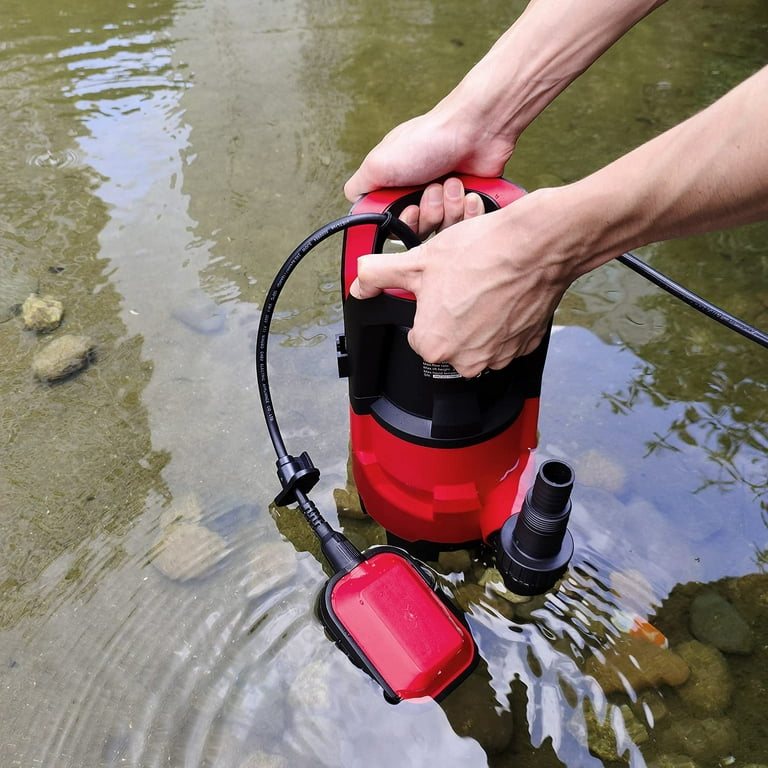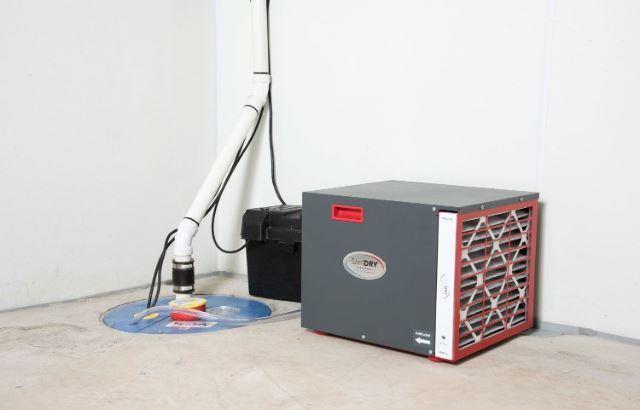Practical Tips for Taking Care of a Sump Pump
Practical Tips for Taking Care of a Sump Pump
Blog Article
Presented here underneath you can locate more decent facts all about Keep Your Sump Pump Clean, It'll Keep You Dry.

Sump pumps are essential components in numerous homes, especially in areas prone to flooding or too much wetness. They help prevent water damage by successfully eliminating excess water from cellars or crawl spaces. However, like any other device, sump pumps require routine upkeep to guarantee they operate properly when needed the most. Cleaning your sump pump is a crucial part of its maintenance, and comprehending how to do it effectively can save you from costly repairs and potential disasters.
Introduction
Preserving a clean sump pump is important for its correct performance and durability. Disregarding this vital task can result in clogs, breakdowns, and eventually, water damage to your property. Consequently, finding out exactly how to clean a sump pump is important for property owners that depend on these tools to maintain their basements dry and safeguarded.
Indicators of a Dirty Sump Pump
Understanding when your sump pump needs cleansing is vital for stopping possible breakdowns. Some typical indications that suggest a filthy sump pump include odd noises during procedure, reduced water circulation, and noticeable debris in the pit. If you discover any of these signs and symptoms, it's important to clean your sump pump promptly to stay clear of any type of further issues.
Planning for Cleaning
Prior to you start cleaning your sump pump, it's vital to take some security preventative measures. Begin by shutting off the power to the pump to prevent any kind of electric accidents. Furthermore, put on suitable safety equipment, such as handwear covers and goggles, to shield on your own from dirt, particles, and prospective microorganisms.
Understanding the Sump Pump
Prior to diving right into the cleansing procedure, it's necessary to have a basic understanding of how a sump pump functions. Commonly mounted in a pit or basin below the cellar floor, a sump pump contains numerous vital elements, consisting of a pump, a float switch, and a discharge pipeline. When water builds up in the pit, the float button activates the pump, which after that pumps the water out through the discharge pipeline, far from the structure's structure.
Step-by-step Overview to Cleaning Up a Sump Pump
Shutting down the Power
Begin by detaching the power supply to the sump pump to stop any type of mishaps while cleaning.
Checking for Proper Performance
Prior to re-installing the pump, carry out a quick examination to make sure that the float button activates the pump properly. Pour some water right into the sump pit and observe the pump's procedure. If every little thing is operating correctly, you can rebuild the pump and reconnect the power supply.
Removing Particles and Dust
Utilize a pail or a scoop to remove any kind of visible particles, dirt, or debris from the sump pit. Dispose of the debris appropriately to avoid it from clogging the pump or the discharge pipe.
Cleaning the Pump and Float Switch
As soon as the pit is clear of debris, meticulously get rid of the pump from the pit. Examine the pump and the float switch for any type of indications of damage or wear. Use a soft brush or towel to clean the surfaces and eliminate any type of gathered crud.
Purging the System
After cleansing the pump and float button, flush the sump pit with tidy water to get rid of any type of remaining dust or sediment. This will certainly aid make certain that the pump operates smoothly and successfully.
Upkeep Tips to Keep Your Sump Pump Clean
In addition to routine cleansing, there are several upkeep pointers you can follow to keep your sump pump in optimum condition:
Final thought
Cleaning your sump pump is a critical aspect of its maintenance and guarantees that it operates properly when you require it one of the most. By adhering to the actions laid out in this guide and incorporating normal upkeep right into your regimen, you can prolong the life expectancy of your sump pump and shield your home from water damages.
6 STEPS ON HOW TO CLEAN A SUMP PUMP PROPERLY
UNDERSTANDING SUMP PUMPS
Your sump pump plays a crucial role in protecting your home by managing and removing excess water. It primarily functions as a “shield”, guarding your basement against the damaging effects of water accumulation. The pump is housed in a sump pit in the lowest part of your basement, and its job is to pump out any water that collects there.
During heavy rainfalls or when snow melts rapidly, water can infiltrate your basement, posing potential risks like flooding, structural damage, and harmful mold growth. Here, the sump pump springs into action, pumping out the intruding water and directing it away from your home.
SAFETY FIRST
Before cleaning, remember to prioritize safety. Disconnect the sump pump from the power source to prevent any accidental electric shocks. Also, wear sturdy gloves to protect your hands from any sharp or dirty components within the pump.
REMOVE THE SUMP PUMP
After ensuring your safety, the next step is to remove the sump pump from its pit. Doing this might require careful maneuvering as you don’t want to damage any pump components. Once removed, clean the sump pit to remove any accumulated debris or sludge.
INSPECT THE PUMP
Inspect the pump for any visible signs of wear or damage. Check the power cord, float switch, and impeller housing. If any components look worn out or damaged, consider replacing them to ensure optimal performance.
CLEAN THE PUMP
Thoroughly clean the pump with warm, soapy water. Make sure to rid it of any dirt, gravel, or other debris that might impede its performance. You can use a toothbrush to clean the small, hard-to-reach parts of the pump.
REINSTALL THE SUMP PUMP
Reinstall the pump into the sump pit Make sure it’s positioned correctly to remove the water effectively Once it’s back in place, reconnect it to the power source TEST THE PUMP
Finally, pour some water into the pit to ensure the pump works correctly. It should start automatically and begin pumping out the water; if it doesn’t, check the power source and the positioning of the pump.
Remember, while cleaning your sump pump is an essential part of home maintenance, hiring a professional plumber for a thorough inspection and cleaning at least once a year is also important. This will ensure that your pump is in optimal condition, ready to protect your home from potential water damage.
BEST PRACTICES FOR CLEANING SUMP PUMP DISCHARGE PIPES
Regular Inspection: Regularly inspect your discharge pipes, especially during heavy rainfall or snowmelt periods. Look for any signs of blockage or damage. Early detection of problems can prevent serious issues down the line. Periodic Cleaning: Over time, sediment and debris can accumulate in the discharge pipes, impeding the flow of water. Regular cleaning helps keep the pipes clear and functioning efficiently. You can use a high-pressure water jet to effectively clean the pipes. Insulation During Winter: In colder climates, discharge pipes can freeze, blocking the outflow of water. Protect your discharge pipes from freezing temperatures by insulating them with foam pipe insulation. This will ensure the sump pump can continue to discharge water even in freezing conditions. Proper Positioning: The discharge pipe should be positioned to direct water away from your home’s foundation. Improper positioning can lead to water seeping back into the basement. Ensure the pipe is long enough and angled correctly. Installation of a Check Valve: A check valve prevents water from flowing back into your sump pit after the pump has pushed it out. Installing a check valve helps maintain the efficiency of your sump pump and reduces the risk of flooding. Minimize Pipe Turns: Every curve or turn in the discharge pipe can decrease the efficiency of water flow. By minimizing turns and bends in your discharge pipe, you can increase the efficiency of your sump pump. https://www.fullspeedplumbing.com/how-to-clean-a-sump-pump-properly9999/

I'm just very taken with and I am assuming you enjoyed reading my entry. Sharing is good. Who knows, you may be helping someone out. I take joy in reading our article about Keep Your Sump Pump Clean, It'll Keep You Dry.
Get Quote Now Report this page